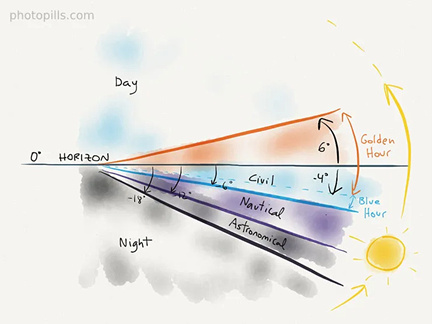Quality Light


It’s the quality of the light that makes or breaks our images.
Landscape photographers “chase the light.” It shouldn’t be a surprise. The word photography was coined from the Greek words “phos” (light) and “graphê” (drawing) in 1839 by Sir John Herschel. Together, they mean “drawing of light.”
Photographers are obsessed with both the quality and the direction of light. Lighting quality refers to the hardness or softness of the light. Soft light is low contrast with limited shadows and saturated colors. Hard light on the other hand, adds lots of contrast, heavy shadows, and washed-out colors.
Lighting direction refers to the direction at which the light strikes the subject. For instance, noontime sunlight hits the subject from above and evening sunlight hits the subject from the side.
Of the two, lighting quality stands out as more important. You can always experiment with different lighting directions for beautiful results. But if you fail to understand lighting quality, your images will be consistently mediocre or just plain bad.
Gold and Blue Magic
There are seven types of light ranging from the harsh overhead light of day to near total darkness at night. In between those extremes are the three stages of twilight (astronomical, nautical, and civil). Photographers want to chase the so-called magic hour light around sunrise and sunset.


It’s called the magic hour because the soft, diffuse, and colored light magically transforms meh daytime scenes into outstanding photos. You need to be there early and to stay late.
At sunrise, golden hour begins before sunrise when the sun is four degrees below the horizon and continues until the sun is six degrees above the horizon. The light can paint the landscape with golden reds, oranges, and yellows. At sunset, it begins when the sun is six degrees above the horizon. It continues past sunset until the sun is four degrees below the horizon.
At sunrise, blue hour begins when the sun is six degrees below the horizon and ends when the sun is four degrees below the horizon. The light has an intense soft blue tone, with saturated colors. After sunset, blue hour begins when the sun is four degrees below the horizon and ends when it is six degrees below the horizon.
Their timing depends on the season and how far away from the equator you are. In Chicago this morning, blue hour begins at 6:48 am and ends at 6:58 am. Golden hour then begins and ends at 7:55 am. In the evening, golden hour begins at 5:13 pm and ends at 6:09 pm. Blue hour then begins and ends at 6:19 pm.
If it was June in Grand Marais, the sunrise would be much earlier and the sunset much later. And magic hour times would be approximately fifty percent longer.
The Shot
On July 8, 2021, I was photographing Cascade Lake near the Boundary Waters Canoe Area in Northern Minnesota. We were having such a great time photographing the night sky that we lost track of time.
Around 4:30 am, we noticed the beginning of the blue hour. With an air temperature of around forty degrees, a photogenic fog was hugging the lake. To me, the soft blue light, the stars, and the atmosphere made this a special moment.
There will be no Friday Photo for the next two weeks. I’ll be headed to a special location with views of the highest mountains on earth.
Thanks for looking,
Chuck Derus